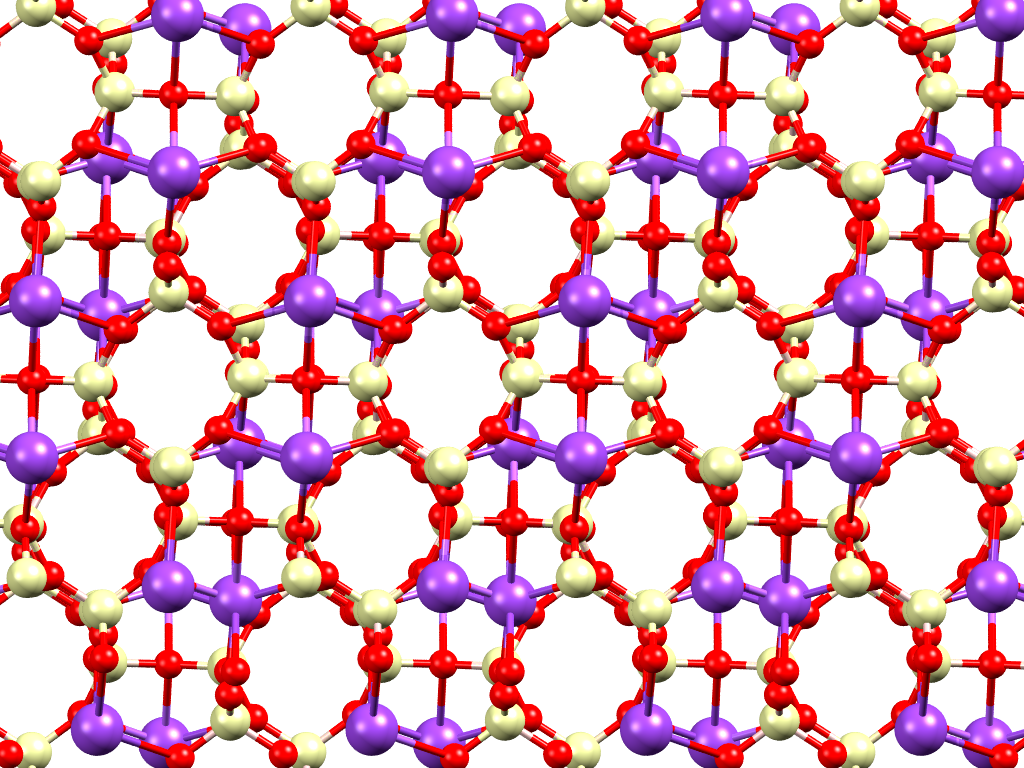Radon
Radon:

Feldspar rock with a US 1 ¢ coin for scale (19.05 mm , 0.75 in). Feldspar contains trace amounts of radon gas.
Facts about Radon:
- Radon: Colourless, odorless, and tasteless gas
- Fun fact about Radon: Radon is often the single largest contributor to an individual’s background radiation dose as it occurs naturally in rocks.
- Chemical symbol: Rn
- Atomic number: 86
A crystal structure containing Radon:

Every crystal of Feldspar is tightly packed with sodium and potassium (purple spheres), aluminium and silicon (yellow spheres) and oxygen (red spheres).
Facts about this structure:
- Formula: Al1.02K0.3Na0.7O8Si2.98
- Structure name:Sodium Potassium Tecto-alumosilicate / Feldspar
- Fun fact about the structure: We chose to highlight this crystal structure because feldspar is in granite, which is known to contain trace amounts of radon.
- ICSD Number: 34742 (Find out more about the ICSD database)
- Associated publication: R. de Pieri, S. Quareni, Acta Crystallographica,Section B:Struct.Crystallogr.Cryst.Chem., 1973, 29, 1483, DOI: 10.1107/S0567740873004772
More about Radon:
Radon is one of the 25 elements that have yet to be observed in a crystal structure. It is dangerous to humans as it has been linked to lung cancer amongst miners, particularly in uranium mines. This has led to strict regulations for radon exposure and ventilation in mines. It naturally occurs in rocks like granite, which is an igneous rock mostly made of quartz and feldspar. Feldspar makes up about 41% of the Earth’s continental crust by weight, and is used in ceramics and glassmaking. The Curiosity Rover identified a rock with a high feldspar content on Mars in October 2012!
Learn More About the International Year of the Periodic Table (IYPT) in Crystals Project:
This project (#IYPTCrystals) is part of the International Year of the Periodic Table celebration (#IYPT2019), read more about the project here.
You can follow us on social media; search for #IYPTCrystals or follow The CCDC on X @ccdc_cambridge on Facebook ccdc.cambridge, on Instagram ccdc_cambridge or on YouTube CCDCCambridge.
Understand some of the terms and concepts used with our Frequently Asked Questions page here.
A 3D visualization showing Radon in real crystal structures: